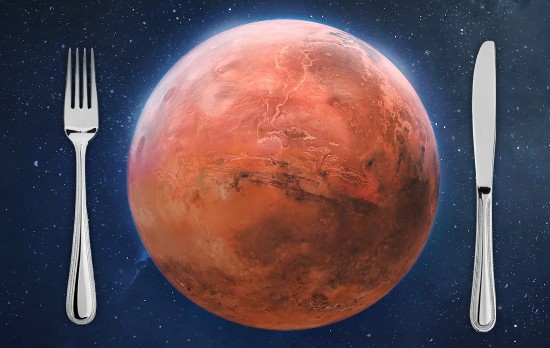Yesterday marked the second launch of Elon Musk’s Starship. This time the booster and second stage separated successfully. Then the booster blew up followed by the Starship self-destructing after reaching space. The SpaceX team described the exercise as a success while the world watched in real-time tens of millions of dollars going up in smoke.
This is how SpaceX advances the technology. Unlike NASA which spends billions of dollars on carefully planned and executed projects to obtain a perfect liftoff and mission, SpaceX builds, tests and breaks hardware regularly, learning from each blow-up what needs to be fixed and improved. Starship and its heavy first-stage booster have seen multiple generations already and likely will see many more to iron out all the engineering issues until success is achieved. Is this a faster process than NASA’s approach? As of yet, it is hard to tell.
Another SpaceX differentiator comes from the mind of its founder, Elon Musk. Musk created SpaceX to save humanity from an extinction-level event here on Earth. His goal from the start has been to put a city on Mars and make humanity the first multi-planet species.
We may not be the first to go multi-planet when you think of the origins of life here on Earth. Although we have yet to find Martian life, or for that matter life elsewhere in the Solar System, panspermia, an origin theory hypothesizes that life on Earth came from elsewhere. We may already, therefore, be descendants of Martians who evolved more than 4 billion years ago, or Venusians from the same period, before the latter planet turned into a runaway greenhouse.
Musk’s ambition is to create a city of a million on Mars by the end of this century. That’s a lot of mouths to feed which brings me to the headline of this posting and what many consider the biggest impediment to Musk’s vision of sending humans to the Red Planet.
A Martian Mission Will Need Lots of Food
What will that first mission entail besides the rocket and the Starship with an environment capable of sustaining life for a close to six-month voyage to get to Mars and then after while on the planet, and for the return trip? Food.
At the Institute of Agricultural Biotechnology, University of Agricultural Sciences in India, Rajkumar Hassamani told the Al Jazeera network, that for a three-year mission to Mars, a crew of four would need up to 12 thousand kilograms (26,400 pounds) of food.
The payload capacity of a Starship travelling to Mars is estimated to be 450 metric tons (990,000 pounds). The fuel needed to make the journey will weigh 1,200 metric tons (2,600,000 pounds). Additional payload includes the crew, life support and food.
Nothing humans have ever launched into space approaches these numbers other than the International Space Station (ISS) which upon completion after 30 missions and 10 years weighs 420 metric tons (925,000 pounds).
When comparing maintaining a crew on the ISS versus one going to Mars and back, the food issue becomes a stark reality. Regular supply runs from Earth provide food to the ISS. Most of the food comes in packaged meals. In addition, ISS crews have been experimenting to grow food with some success adding to the packaged food they normally eat.
A Martian expedition would include packaged meals and a means to produce food inside Starship and within a climate-controlled habitat once on Mars. Producing food in space is still in its infancy. On board the ISS is the NASA Fiji Vegetable Production System which is not only producing food for the crew but is also turning them into space farmers which is both therapeutic and rewarding.
There are many questions and challenges still to be overcome with Hassamami stating, “Our lab and others around the world will address these questions, and we hope that biotechnology, synthetic biology, and metabolic engineering tools will help us answer them and design plants for space agriculture.”
What are some of these questions and challenges to overcome?
- On Mars, the Moon, or Starship, balancing carbon dioxide (CO2) and oxygen levels sufficient for plant and crew health will require cultivating new strains of the former capable of thriving and supporting variable atmospheric conditions.
- Plant anatomical and physiological structures will need to compensate for not only the stresses of low gravity and microgravity but also, deal with:
- Damage to DNA and mitochondria observed in current plants being grown in space. This will mean remodelling plant cell walls, changes to the composition and structure of polysaccharides, and the engineering of high-fibre plants needed to ensure the digestive health of human crews.
- A common complaint about foods eaten in space leading to menu boredom caused by changes in how it tastes, altered texture, and loss of flavour.
- Turning plants into repositories of essential minerals, phytochemicals and micronutrients that currently get lost from them in space.
NASA and the European Space Agency (ESA) have experimented with growing plants in the confined space of the ISS to produce maximum yields. They are working with using red light to improve whole-plant development, gene expression and adaptive responses to microgravity addressing many of the above challenges. Red light activation stimulates and restores cell proliferation and root growth in plants improving their stress response to space travel.
What will a farm heading to Mars on a Starship look like? It will be a jam-packed vertical farm, not looking much like anything on Earth and will truly be the first “red light district” in space.









[…] Life Support Systems – The technologies needed to sustain a crew for the duration of a mission include regenerating breathable air, onboard food production, managing waste and providing the means to handle medical emergencies. The International Space Station (ISS) is the current test bed for developing life support systems including onboard food production. See a previous posting I published here entitled, “The Biggest Impediment to Humans Going to Mars is Food Not Whether SpaceX’s Starship Can Fl… […]